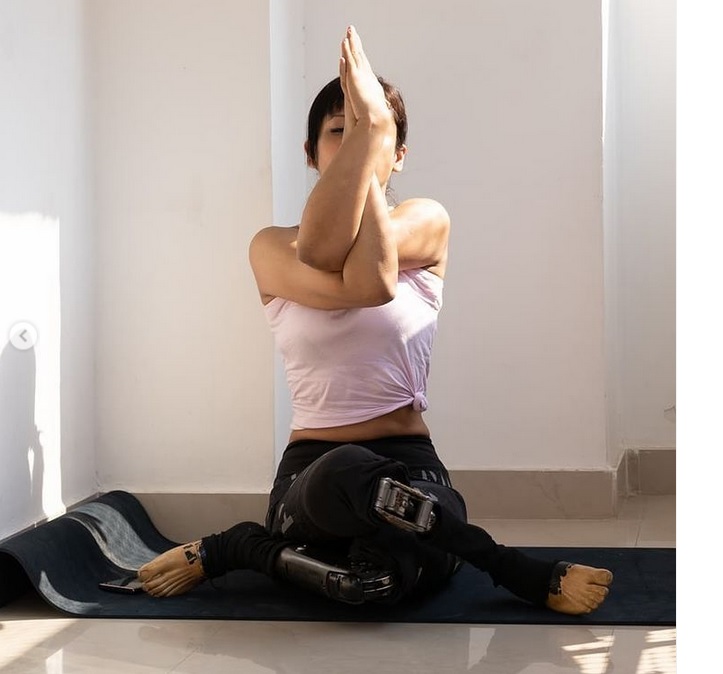
“The real meaning of yoga,” writes Arpita Roy, “is deliverance from contact with pain and sorrow.”
Roy embodies that definition as a bilateral amputee yoga teacher with a burgeoning online following. She’s been making headlines recently in her native India, where attitudes toward disability remain decidedly narrow. Because of the stigma surrounding limb difference, it took Roy more than 10 years to overcome her insecurities and start teaching yoga. And she needed several more years before she found the courage to reveal herself, sans prostheses, on social media.
It has been a liberating experience, both for her and for the devoted (and growing) base of fans who’ve discovered Roy on Instagram. Her mastery of this difficult discipline, and her unashamed exhibition of her limb difference, are putting cracks in the wall of stereotypes that marginalize Indians with disabilities.
Roy lost her limbs at age 20 in a 2006 traffic accident near Kolkata. Her recovery was beset by intense phantom pain, financial constraints that limited her health-care options, and a sense of guilt that she was becoming a burden on her family. She relieved the latter by going to work as soon as she was able, about 18 months after the accident—but that’s when she discovered how unforgiving Indian society could be toward amputees. Reactions veered from hostile stares to expressions of pity.
“There was a time when I might [have been] the only person who used to believe in me,” she wrote recently on Instagram. “But I guess that was enough for me. It was like just one star to pierce a universe of darkness.”
Roy eased into yoga slowly after limb loss, largely teaching herself because there were no teachers available who were schooled in adaptive yoga. She eventually gained certification and began teaching a few years ago, primarily serving an able-bodied clientele. Somewhat to her surprise, Roy found that some of the habits she’d developed through limb difference, and which she incorporated into her yoga training, resonated deeply with her able-bodied subjects. Instead of focusing on her limb loss, they identified Roy with patience, persistence, adaptation, self-acceptance, and other values that she wove into her practice.
It was the first time she’d ever encountered positive reactions to her disability—the first time, after more than a decade of slights and soft bigotry, that other people recognized her limb loss as a source of strength rather than weakness. That gave Roy the courage to put herself out there publicly and begin challenging stereotypes more directly. “We are not defined by our challenges, but lifted by them,” she wrote in one of her earliest Instagram posts. “Some call it adversity; I call it opportunity.”
Although COVID interrupted her in-person yoga practice, it brought more attention to her yoga demos and workout tips on Instagram. Roy’s feed alternates between amputee-specific yoga material (e.g., poses to help relieve back pain; exercises for hip flexibility) and more universal content that’s aimed at a broader audience. She occasionally pushes back directly against the negative energy that prevails in India, but most of the time she tunes it out and accentuates the positive. You can find her at @arpitaroy.yoga. See also this video profile from Times of India.
Read more about yoga at Amplitude
How to Get Started With Amputee Yoga
Study Finds Yoga Helpful for Lower Back Pain